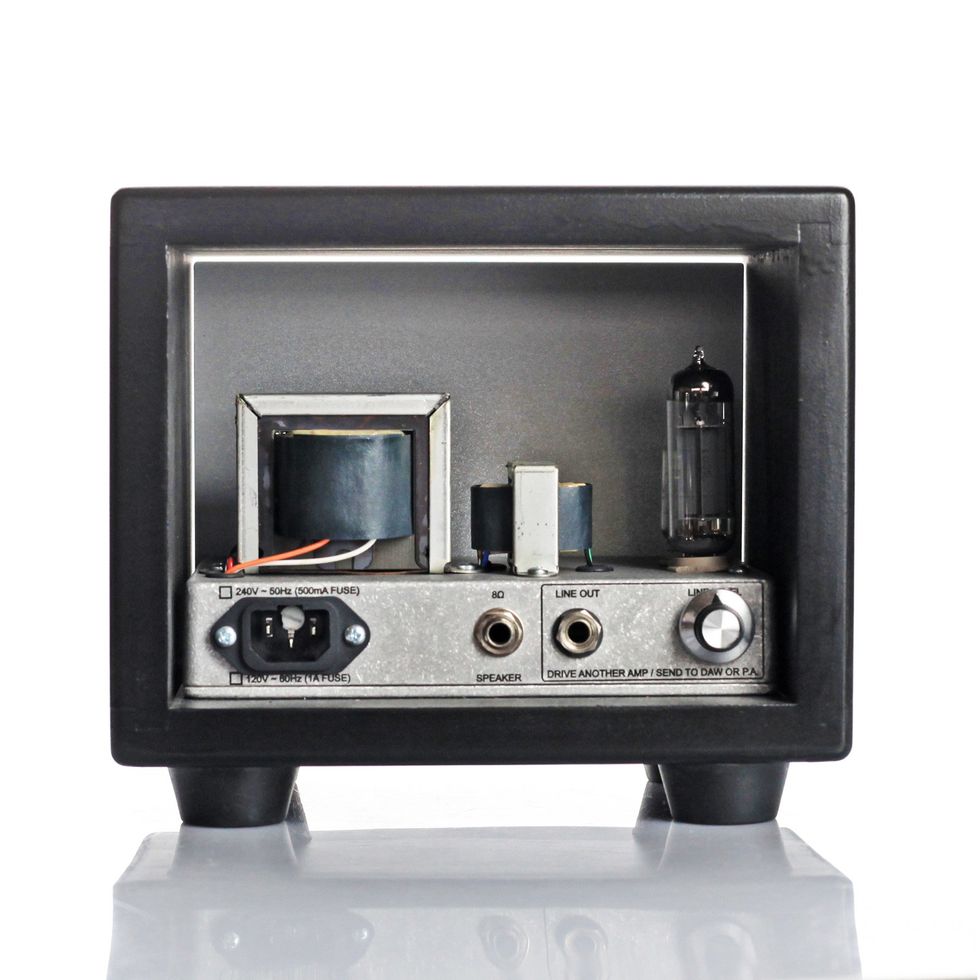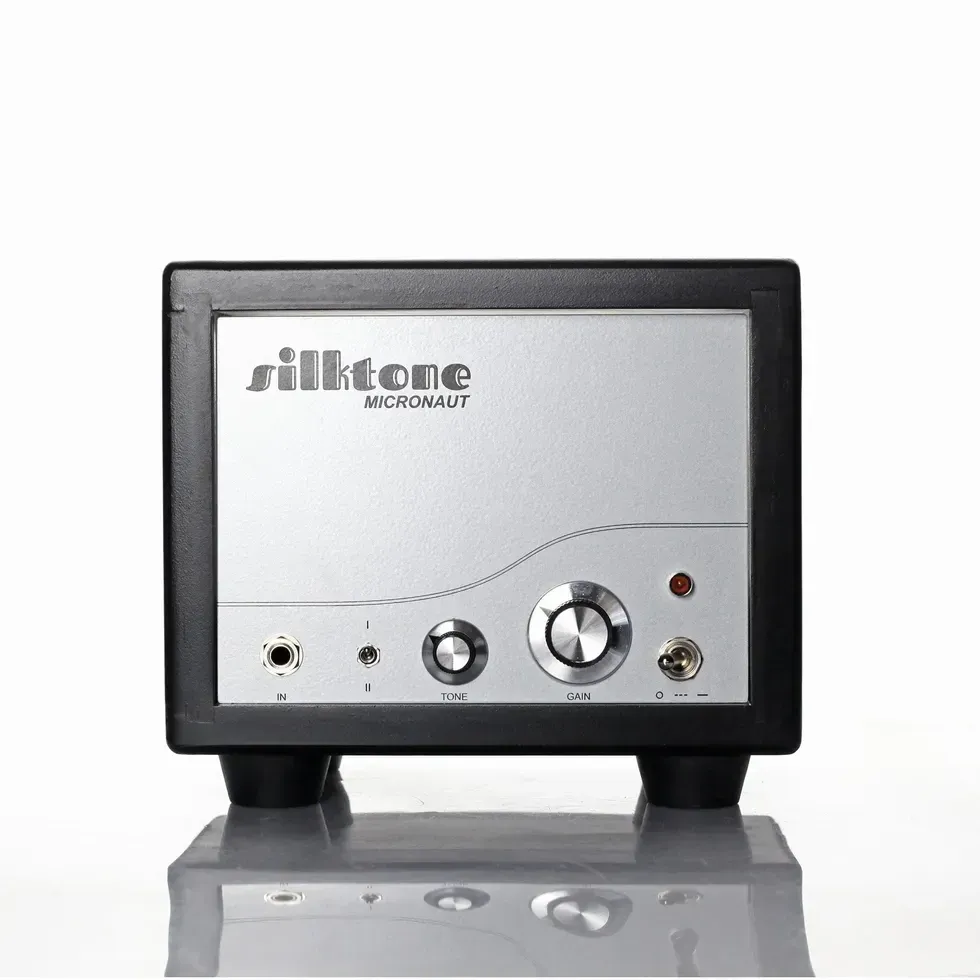Already acclaimed for tube combo amps and their eponymous fuzz pedal, Sacramento-based Silktone recently released the clever Micronaut, a cuddly micro-amp with many more performance possibilities and range than its size or simplicity suggests. Despite the blocky dimensions and funky radio-age looks, the 9" x 7.5" x 6", 6 1/2-pound box houses a genuine tube amp, with tubes in both preamp and output slots. A single 12AX7 drives the former, while a single EL84 in the latter delivers approximately 4 watts of power. Coolest of all, perhaps, is you can use the Micronaut as an amp head, as a DI to your DAW or PA, or as a preamp to drive an amplifier.
Small Packages
The Silktone is an interesting design. Unlike the line outs on most amps, the DI on the Micronaut is connected to a fully independent winding on the output transformer which isolates it from the rest of the signal path. This elegant solution expands the versatility of the Micronaut. But its controls couldn’t be much simpler. There’s a gain knob, a smaller tone knob, and a two-position voice switch. Around back, there’s a single 8-ohm speaker output, plus another 1/4" line-out jack with line-level control.
The standard Micronaut cabinet is made from black-lacquered wood, but there’s a solid-walnut option available for an extra $200. The chassis is home to handwound, paper-layer power and output transformers custom-made by Soursound. The circuit is entirely handwired, with TAD repro mustard caps (which replicate ’60s-spec Mullard units), MOD electrolytic caps, and other quality parts, on a sturdy turret board.

Space Shot
I subjected the Micronaut to tones as varied as those from a 1959 Les Paul Reissue and a pre-CBS Fender Jaguar, and I tried it out with a 1x12" extension cab when configured as a standard amp head. In every combination, the Micronaut felt dynamic and offered a wide range of tones.
In mode I, my tone remained extremely clean right up until the last 20 percent of the gain knob’s range. And even with the Les Paul in front, the Silktone produced a crisp, balanced voice on the Fender-y side. The tone knob is effective in this mode. The taper is wide and feels like it genuinely reshapes the tone in cool ways, rather than just blunting it—though, in general, I preferred to keep it pretty bright.
Mode II still adds a major gain push to an amplifier’s front end that, when set just right, evokes Marshall-plexi voices.
While the clean settings were nice, they could feel a touch flat at times. Overdrive pedals kicked the “I” voice into much livelier zones. A Friedman Small Box, Victory Duchess, and Origin M-EQ pedal all did the trick nicely. The same rig—connected to Pro Tools via the Micronaut’s DI-out and a Universal Audio Apollo Twin Duo—made the Silktone a tasty tracking tool, and I achieved tones with more breadth, air, and touch sensitivity than any middleweight modeling solution I’ve used.
Things get exponentially juicier in mode II, which eliminates global feedback for more gain, more girth, and more harmonic complexity. At half volume and with tone dialed in to taste, this setting elicits great edge-of-breakup tones with both the Les Paul and the Jaguar, and kicks out delectable, raw classic- and garage-rock tones. With the volume maxed, you’re ushered to Fender-tweed-at-full-blast-freak-out heaven. The output is fuzzy, gutsy, and, at times, a beautiful mess, but remains controllable, surprisingly articulate, and very playable.
Used as a pedal preamp in front of a 1x12" 5E3-style combo, the Silktone’s max-gain, mode II setting produced even more dramatic, and far freakier, results. These extreme tones won’t be for everyone, but they can be amazing. Dialed back a little, mode II still adds a major gain push to an amplifier’s front end that, when set just right, evokes Marshall-plexi voices. Back to mode I, the Micronaut enhanced the 5E3 clone’s output with extra harmonic sparkle, and without sacrificing touch sensitivity.
The Verdict
Well-built and simple to use, the Micronaut offers a surprising range of functionality and voices to suit many playing and recording situations. You can keep it simple with the Micronaut. But open-minded players will find many interesting sounds to use, whether they use it as a pedal platform, at the front end of a DAW, or in front of an amp as a gain stage.



















